Silk painter and textile artist Evette Allerdings shares the stories, memories, and bold creative leaps that shape her vibrant work. From childhood kimonos to cross-country fabric hunts to finding her artistic voice in unexpected moments, Evette’s journey is full of color, courage, and curiosity.
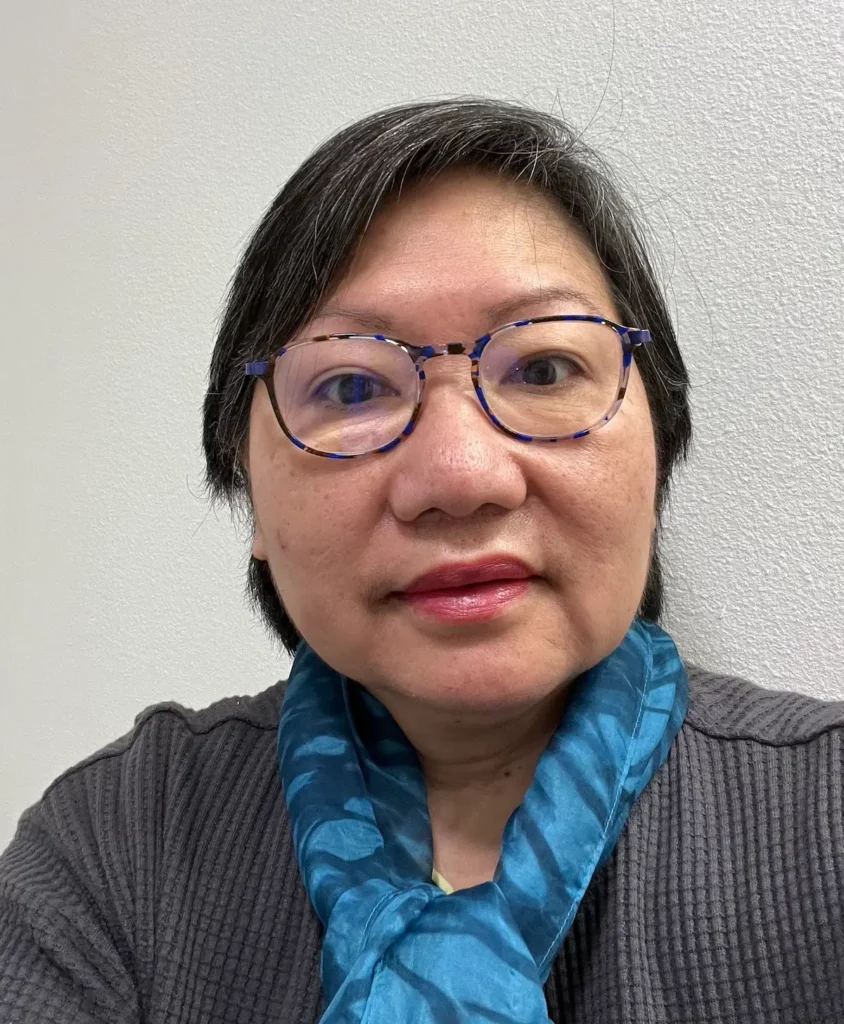
Tell me about the first time you remember making something that felt like art.
I was hired to design costumes for a modern dance troupe inspired by Dadaism, which performed at a contemporary art museum. I did so much research, and although quite challenging, the costumes did look like they came off the walls of a museum.
Where did your love of color and fabric begin? Was there a moment or a person who started it?
My grandmother used to dress us in colorful kimonos for Girl’s Day and other special events. As I was a shy child, it was the only time I wore such vibrant clothing. For me, color became synonymous with feeling “special.” It still does today.
As an Amazon Associate I earn from qualifying purchases. Read more about our affiliate linking policy.
How did your costume and fashion training lead you toward painting on silk?
I was always searching for the perfect fabric to create costumes, sometimes flying from Hawaii to New York or to the West Coast just to shop for materials.
While in college, I bought a silk scarf painting kit, but at the time, I didn’t know how to steam-fix the dye, so I put it away. Thirty years later, while cleaning out a closet, I found that unfinished scarf. Discovering it sparked an explosion of creative ideas and ultimately led me to start painting on silk.
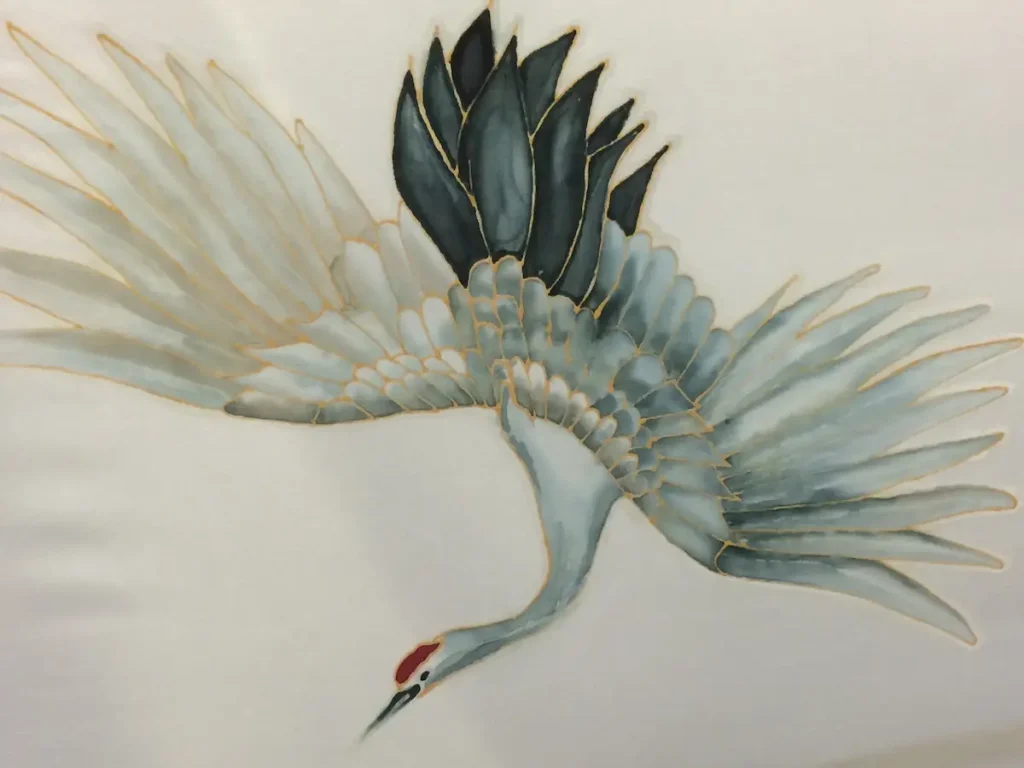
What was the first silk piece you painted? What hooked you?
Other than a small practice piece, my first real silk painting was of a crane, inspired again by the kimonos I wore as a child.
I fell in love with how the dye flows and blends to create new colors and patterns. The process is almost sensuous—it calms me, allows me to tell stories, and often feels therapeutic.

How did your work change when you started combining sewing, beading, and quilting with painting?
As a fashion designer and costumer, I was accustomed to working in three dimensions. I wanted to bring texture and depth to my two-dimensional art, so I began adding sewing, beading, and quilting—always using them sparingly, to enhance my paintings without overpowering them or to overpower the painting to make the texture pop.
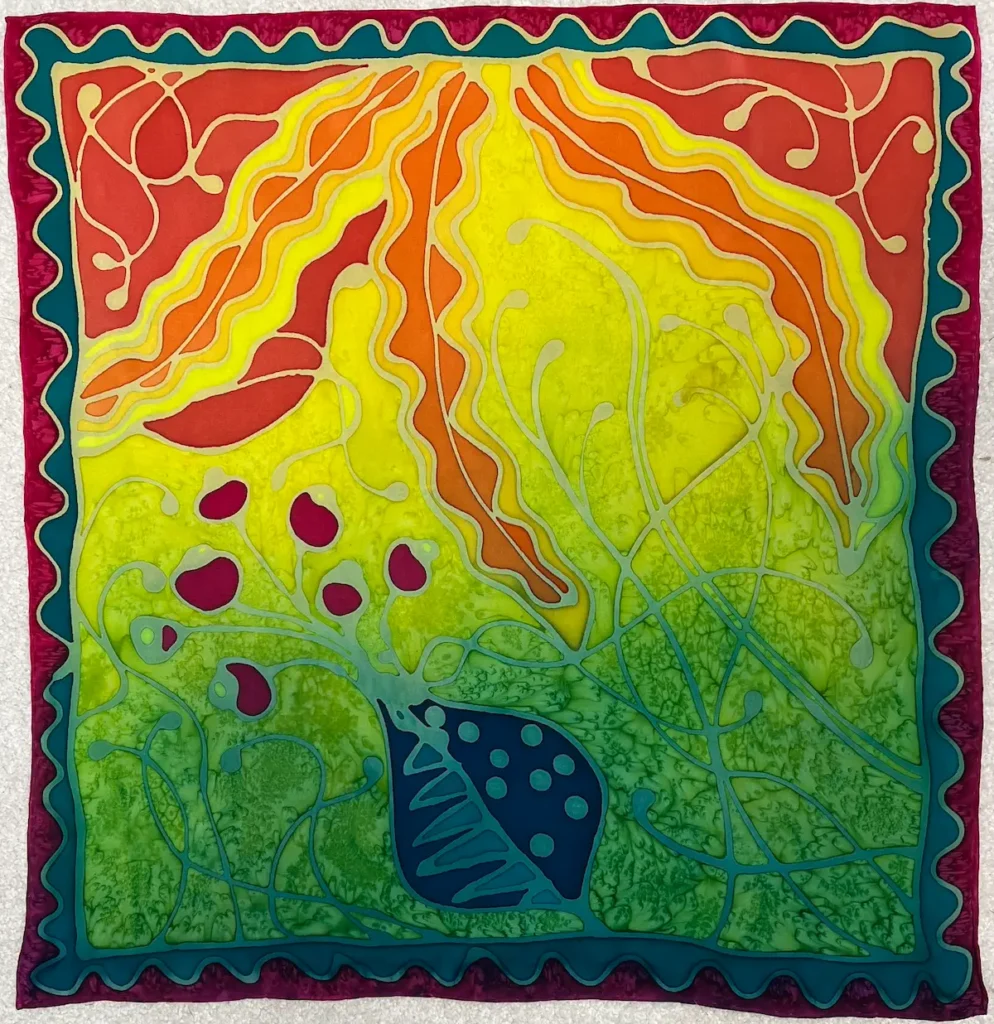
Can you point to a turning point or a project that made you feel “this is my voice”?
As a costumer, I was always limited by the script or the director’s vision. It took me some time to find my own voice, but now I feel unstoppable.
The first piece where I truly expressed myself was titled “f**cked.” My brother-in-law had passed away during Covid, and my husband and I flew to Southern California at the height of fire season to help clean his home. We had to isolate, wear masks, and adapt to the chaos all around us. Driving a U-Haul back to Washington, fires burned on both sides of the freeway at one point—our Covid masks became smoke masks.
When the town we planned to stay in was evacuated, we drove 16 hours straight to get home. This experience inspired the piece, which is silk painted, couched, embroidered, and beaded. Depending on how you look at it, it resembles mountains on fire with floating embers, or a rising graph of Covid cases in multiple states, with airborne viruses ready to infect the next person.

How has your work evolved over the years?
My work is constantly evolving. I have loosened up and now enjoy exploring more abstract designs. Rather than meticulously planning each piece, I embrace the challenge of starting with a blank piece of silk and seeing where it takes me.
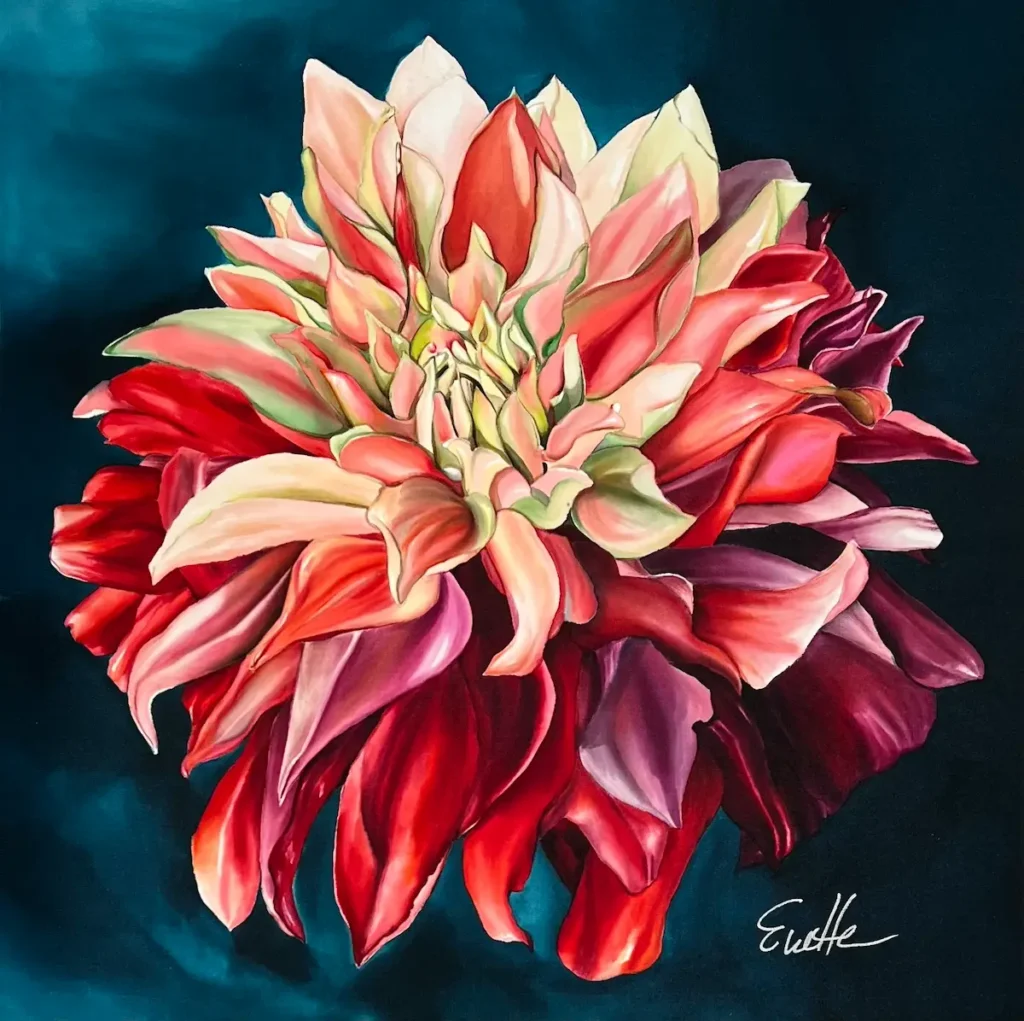
When the work feels stuck, what do you look at or do to find fresh direction?
I rarely feel stuck, stuck! I feel the painting communicates with me—really, it’s my inner self speaking. I just go with it.
Most of the time it works out, but if it doesn’t, I put the piece away for anywhere from a month to a year. When I return to it later, I often see it from a new perspective and find value in a piece I once rejected.
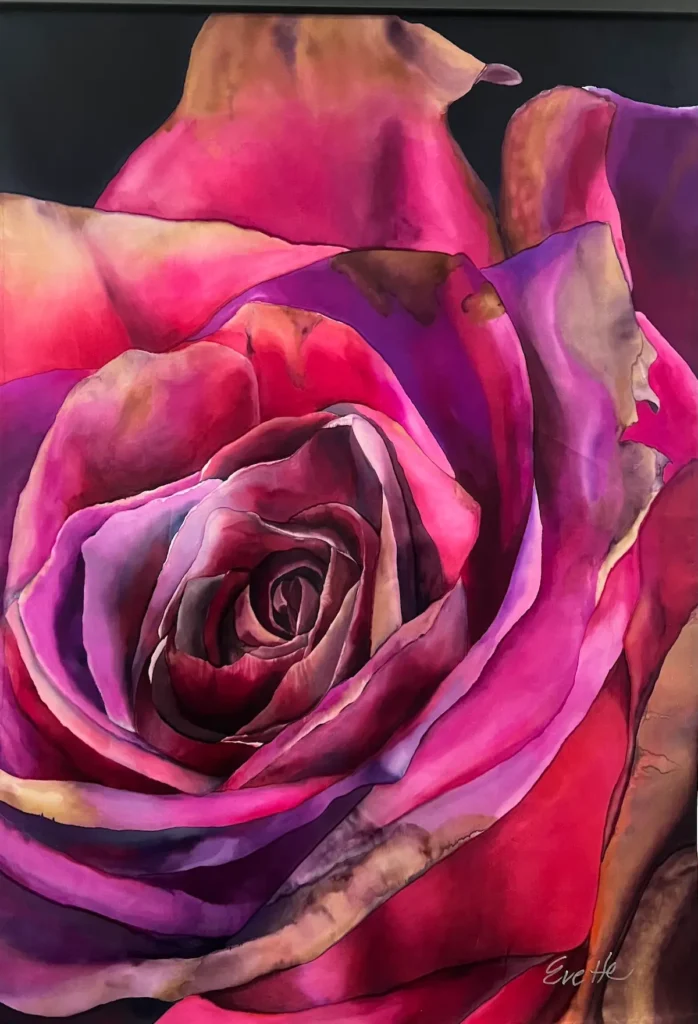
Describe your creative space.
My “studio” now spans my entire house. I gave up my dedicated studio to my 94-year-old mom when she came to live with me—it’s now her creative space.
I have a sewing room for my seven machines, I paint in the dining room, and I cut fabric in the living room. I’m grateful to have a husband who fully supports my creative needs.
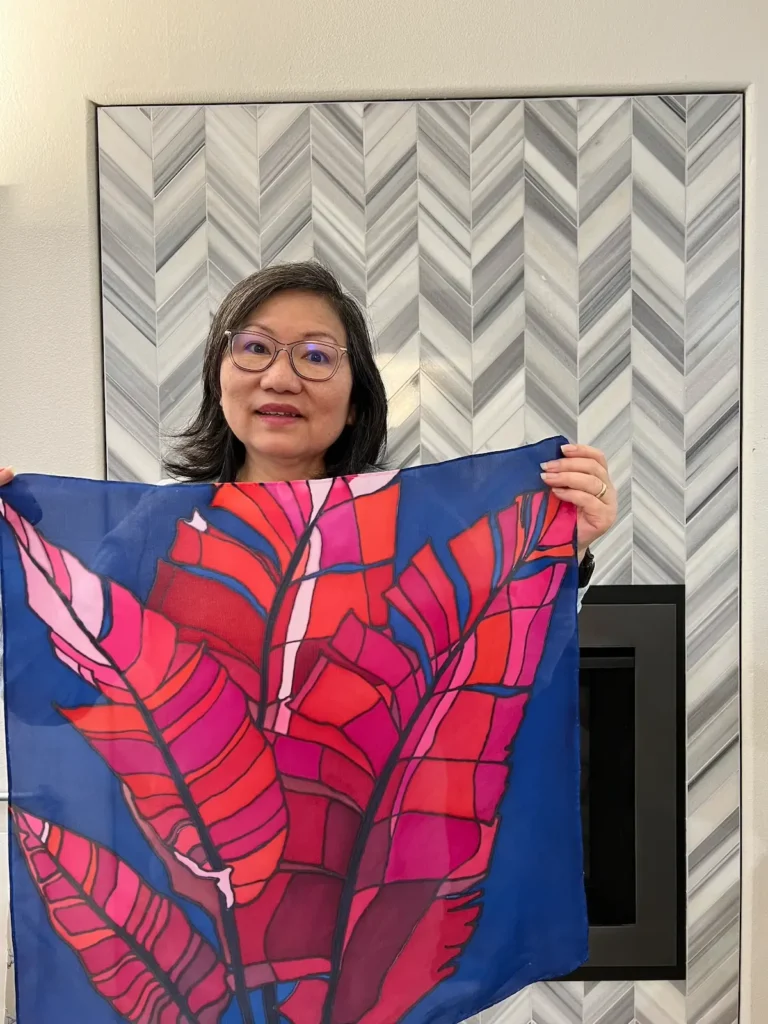
What are the must-have tools and materials you reach for every day?
My favorite Kai 9” serrated scissors, #10 long sewing needle from Japan, and any kind of fabric.
Do you plan pieces ahead with sketches, or do you let the silk and color lead you?
I do sketches once in a while, but I usually let the silk and dye take the lead, or follow a story or feeling I need to express.
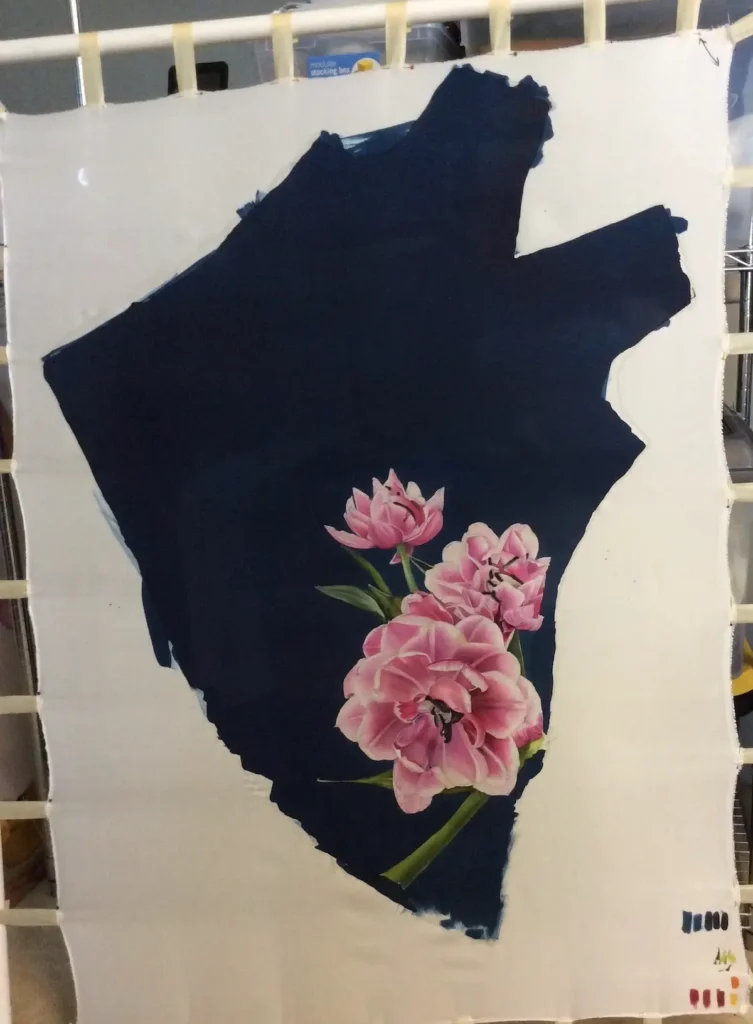
How do you care for and store silk paintings and works-in-progress?
I display some paintings on my walls or store them in a closet. Works in progress are leaned against a wall, while finished but unmounted pieces are stored in a bin kept away from direct sunlight.
I wash my silk scarves in cold water with shampoo + conditioner. Blot with an old bath towel, then iron on hot on the wrong side while still damp.

How do you choose when to quilt, embroider, or bead a painted piece rather than leave it as a painting?
Most of my embellished pieces start as paintings that need a little extra “oomph,” or if I’m preparing for an exhibit that requires quilted work.
How do you know when a piece is finished?
Since I love color, it can sometimes be too much, so I strive to find a balance.
I fall back on the design principles I learned in college—even though I didn’t enjoy those classes at the time!
I also think of each silk canvas or garment as a play: there are leading elements and supporting ones. You want the main elements to shine, but the supporting ones are important for the overall story.
When the narrative of my art comes through clearly, I know the piece is finished.

What are the hardest materials or techniques to control on silk, and how do you manage them?
Silk with woven patterns are especially challenging—the dyes often spread unpredictably. I manage this by almost dry brushing the entire piece to maintain control.
Tell me about a time a piece didn’t work out—what did you learn and how did it change your approach?
My father took up woodworking after he retired and once read me an article about a man who kept pointing out the imperfections in his work—only to later win an award for that very piece.
The lesson was: if you don’t point out the flaws, most people won’t notice. I believe there are no mistakes in art—just opportunities to redirect, get creative, and make new art from your previous efforts. No stressing allowed!
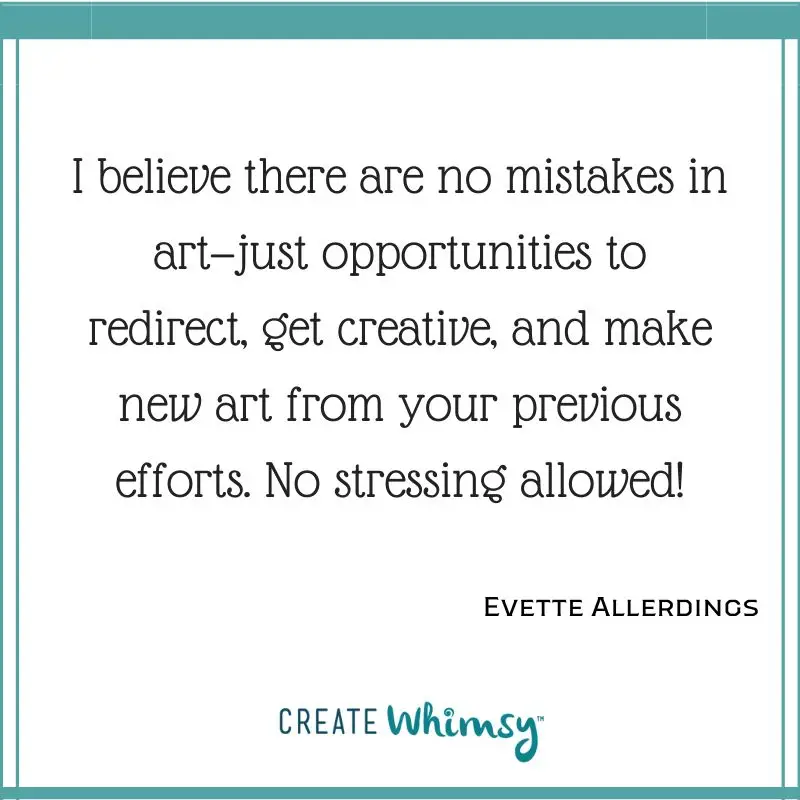
What advice would you give a maker who wants to turn their craft into a small business?
My advice is to do what you really love. Personally, I don’t take commission work—I can’t work with people telling me what colors or designs they want to match their living room. That takes the joy out of creating for me.
But if you can make art, stay true to yourself, and find people who appreciate—and buy—it, that’s truly exciting!
Where can people see your work?
Currently, my work is part of a 21-artist exhibition and art sale at Field Arts & Event Hall in Port Angeles, WA. You can also view my portfolio at evetteallerdingstudio.com, and I have several upcoming exhibitions next year.
Interview posted November 2025
Browse through more surface design inspiration on Create Whimsy.

